Special for the Armenian Weekly
Diasporan Armenians are known to develop obsessions about local Armenian food. The taste of the apricots, the juiciness of the tomatoes, and the aromatic honey have no comparison, and nothing back home can come close.
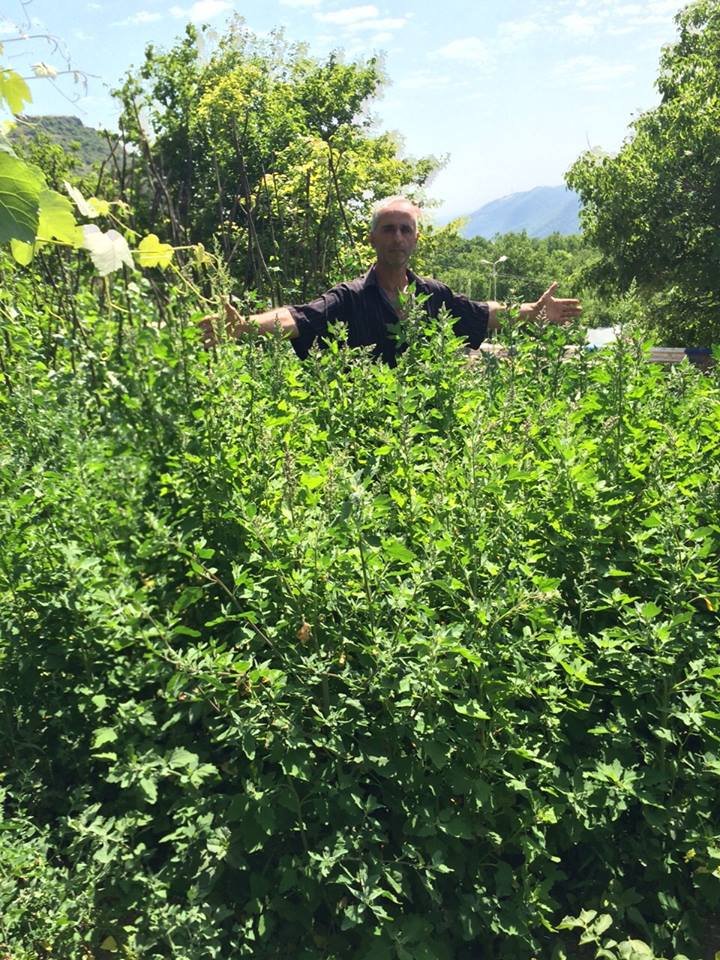
However, for those who have spent time in Armenia through all of the seasons, the tendency towards mono-eating becomes a little more obvious—especially during the wintertime. While tomato and cucumber salads become an automatic staple during the spring and summer, beets, cabbage, and potatoes seem to be the only options to choose from during the winter (beyond khash, of course).
While this reflects mostly what is grown, many farmers are challenging this by growing non-traditional vegetables, such as sweet potatoes and even kale, and with the rise of Syrian-Armenian spices and food shops, things are becoming more varied and interesting.
So while diasporans take a lot of the above-mentioned foods—and drinks (most notably cognac)—from Armenia back as gifts or for themselves, they do often return with their own essentials.
That’s why when I heard about Meline’s Garden, a new initiative introducing quinoa in Armenia, I knew this would radically alter my ‘bring-back’ list.
While bulghur and rice are common, gretchka (buckwheat) tends to reign supreme in Armenia in terms of grains. It can be incorporated into almost every meal and cooked in a variety of ways. Sooner or later, however, the idea of eating gretchka every day loses its appeal. That’s where Taline Kevonian comes in. After many visits to Armenia since 1996 and a two-year stay in 2004, Kevonian had a vision to tackle some of the country’s tendency towards high-sugar diets. She initially thought planting agave would be her focus in order to replace sugar, but she soon realized Armenia’s climate was not right for this tropical type of growth.

She opted for quinoa instead, as it has many health benefits, is an adaptable grain, already contains the natural pesticide saponin, is much better suited for diabetics due to its fiber content, and after a few seasons it actually replenishes the nutrients in the soil it is planted in. Another plus was that, as she and many others were a little sick of the common grains available, she felt quinoa would add some healthy diversity to the tendency of mono-culture in the motherland.
Kevonian began renting out her apartment in the United States in order to save money for her project, and was confident in her decision, as she believed she would be doing something beneficial for a community she had spent so much time in.
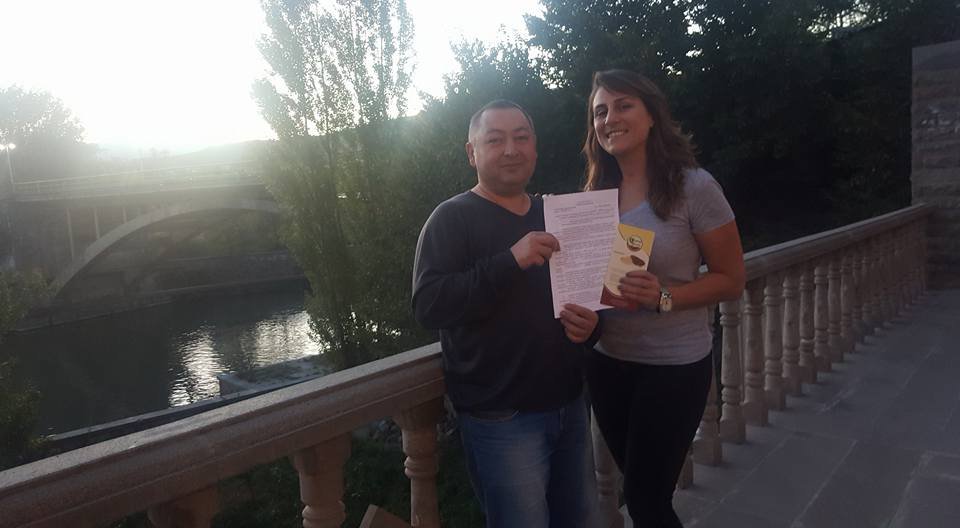
Soon, however, she began experiencing the notorious “chi gareli” (it’s not possible) mentality of many local and diasporan friends. Reminding herself that “Trader Joe’s didn’t have any quinoa 10 years ago,” and that it is a grain neutral in appearance and therefore not a “scary new product,” she knew it had potential to become something big and beneficial in Armenia.
She approached a farmer she had known for more than 13 years in Halidzor with her plan and asked if he wanted to dedicate a section of his plot of land to growing quinoa together. After going over the details, he agreed with the idea of “bringing his boy back from Russia,” and after a few celebratory (mandatory) shots of tti oghi the wheels were in motion.
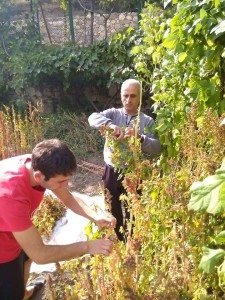
Kevonian brought with her four different types of seeds to plant, acknowledging Armenia did in fact have wild quinoa, though it did not carry the same nutritional aspects of cultured.
Between May and June, they planted the seeds to test them. Some mistakes were made and learned from—such as planting them too close to each other, therefore causing cross pollination. But they had also made a decision to grow it in less-than-ideal conditions—such as areas with very little water—and if it succeeded they would confidently know that “if it can grow here, it can grow anywhere.”
“With quinoa it is just an initial 1.5 months of monitoring where we would have to keep the weeds in check, change positions if needed on top of the planting itself, and after that it is not a labor intensive process,” Kevonian said of the quinoa production process.
Already from that one experimental plot in Halidzor, Meline’s Garden will expand to six more areas by the end of the year, including Sisian and Tavush, and Kevonian is in the process of signing contracts with the interested farmers. Her focus is on working with small-scale farms (of about six hectares) to establish a network of dependable farmers who can remain reliable and not overwhelmed. A few local and international organizations have also proposed projects to work specifically with border villages.

Taline Kevonian’s overall approach is that she is not “helping” anyone. She wanted to avoid this sort of mentality she saw in a lot of diasporan friends with good intentions, or even organizations that focus solely on charity. She wants the resulting partnership to be mutually beneficial and since the positive benefits of this venture significantly outweigh the negatives, Kevonian has learned to focus only on individuals who agree to take on some of the responsibility.
Although she has three master’s degrees, she is quick to point out that she has no specialization in agriculture. However, she asks rhetorically, “Why would I work in international development when I have an idea that would directly support farmers and benefit communities?”
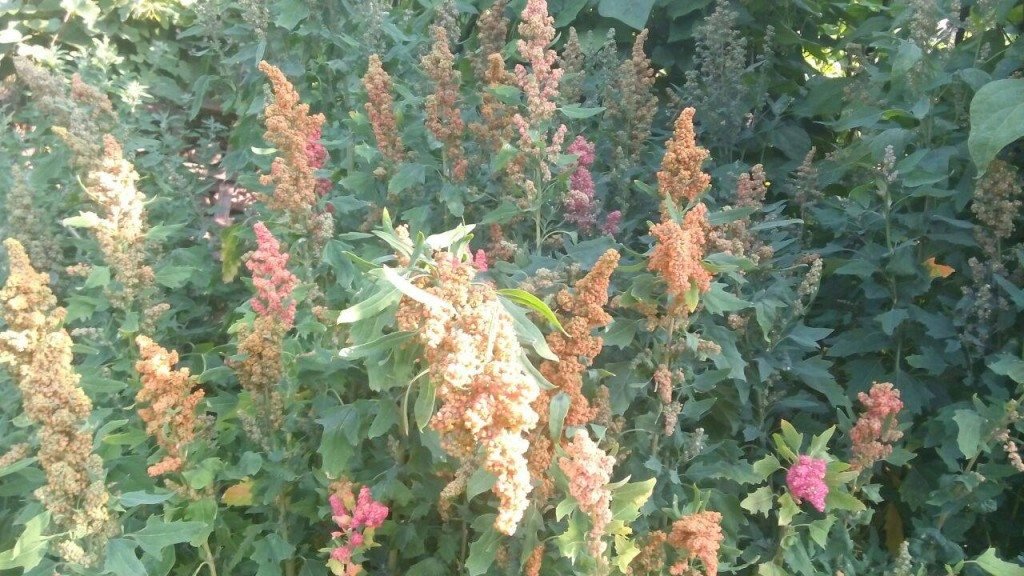
She elaborated more on her initial reasons for going forward with this project: “My grandmother is Meline, who the project is named after, and it is also my middle name. She is 94 years old, cooks the most delicious food, and is an extremely independent woman who was however sometimes overlooked. I was always connected with her and wanted this to be tribute to her.” Taline Kevonian jokes about how her grandmother had never actually tried quinoa before, and when she made her a dish, she quickly exclaimed “Sa inch a!” (What is this!).
Kevonian also noted a secondary reason—and that was my first article published in the Armenian Weekly on veganism in Armenia. She told me that it showed her that healthy living was on the rise in Armenia and that now was the time to begin her project.
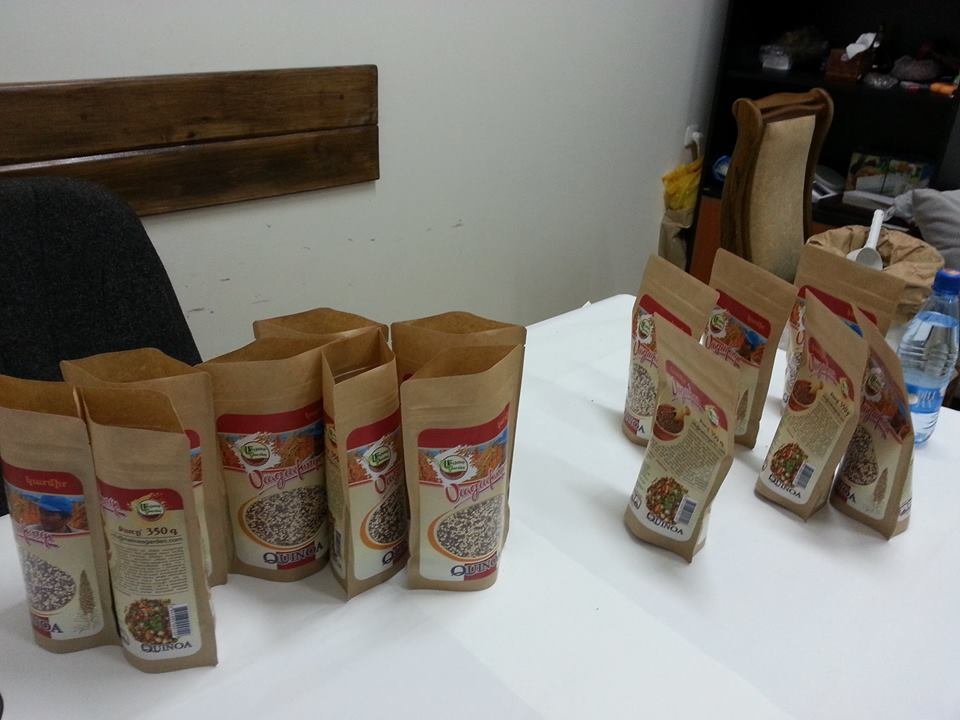
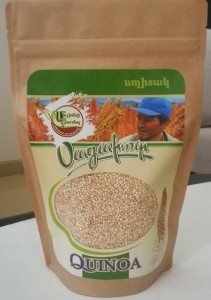
While one of Kevonian’s goals is to have quinoa become a staple in the diets of the local population, she acknowledges that, right now, it may be too pricey. She notes it is just the first year of production, and by continuing to grow it locally and by cutting overhead costs, the price will soon become more accessible. She also has smaller packages available for those who prefer to sample it before committing to the larger amounts. In Armenia currently there is also an imported option from Italy, which is almost double the price of that offered through Meline’s Garden.
Taline Kevonian sells to individuals, distribution companies, as well as to shops and restaurants. Her packaging is through Zart Print, where a portion of the proceeds goes to creating job opportunities for disabled youth.
Although her farm plots specific to quinoa are already rapidly expanding, Kevonian will not stop there. She plans to also incorporate chia seeds and work with farmers in Gyumri to increase flax seed production so that shugas (markets) can sell local—rather than only imported—options.
While this keeps Kevonian very busy and involved in Armenia, she jokes that sometimes leaving Armenia is crucial so she can “get a break from the ‘chi gareli’ mentality”, and return re-energized, focused, and with more determination.



*** Bravo Taline.!!! I am so proud of you. you go girl.., our motherland needs talented and caring business entrepreneurs like you.
As a sometimes resident of Armenia and a regular visitor since 1959 I applauder Kevonian’s initiatives to introduce food variety into Armenia (by the way Broccoli is getting popular there), but we should not forget the rich variety of nutritious foods from Western Armenia, many of which were lost during the Soviet years, nor the wealth of new dishes being brought by Armenia ns from the Arab world. Yes, there is a very conservative strain in the country (remember what the American “cuisine” was?, and the “chi kareli” attitude, but with more stability and economic security, there will be more inventiveness and risk taking. It is possible to see this in Yerevan today. People make basic economic decision, especially when their successes depend on carrying on as usual. I am glad that she is aware of the psychological dimensions of what she is doing. By the way there are now a variety of cooking programs on Armenian TV, whose role in educating people is significant. Remember Julia Childs?
Bravo Talin! We need more intelligent young people like her.
Great story. I know I’m sitting far away from there sitting comfortably behind a computer, but I still feel the needs to say it: More of this please.
I wish this venture good fortune and success. If it succeeds it’s great in several ways as pointed by the article:
– more diversity in the food.
– good healthy food is eaten.
– more of the money stays in the country instead of leaving it.
– and also, it sets a great counter-example to chi gareli.
Ms Kevonian’s experience in Armenia should be shared and duplicated.
I’ve had locally made tti oghi. Strong stuff. But have not had khash. I hear they go well together.
Congratulations Taline.
Please help the Armenian farmers realize the tactics used by Monsanto and other chemical companies (through agents and intermediaries) that collect the real organic seeds from Armenia, Artsakh, and other good old countries. They then export to their “labs”, genetically modify, and control the distribution of unhealthy seeds and fertilizers back to the same countries. All in the name of “feeding the hungry”. It is our hope that Armenian farmers have not lost all the good already. Repeating, I congratulate you for helping Armenia and Armenian farmers.
Dear Talin, You are a real Armenian patriot, may God bless you!
Just do it girl ! perfect
ABRIS, we really need innovative people like her… A truly great idea. Why not try goji berries as well? They are high altitude plants, i’m assuming they should survive in Armenia….
Great job and great initiative from both perspective. For locals it’s a way of income and creates job for many people. One thing that I would like to tell is the price which is not available for the 80% of population. Maybe with the increase of a volume it will be possible to bring down. Good luck and I wish I could see the product in market more often.
Congratulations, Taline, on your success in growing quinoa in Armenia. Thank you for all you are doing for our homeland. A variety of foods is important for good nutrition and just relieves the boredom of eating the same thing every day. You are helping the farmers, the economy and giving a nutritional option to the people of Armenia. God bless you.
Taline: Yergar aden eh zirar chenk dessatz. Googled U and found great article on your achievments. I congratulate you. Maria has had a major back surgery,I read all your mom’s facebook links. Much love from Me and maria. Please give our love to mom.